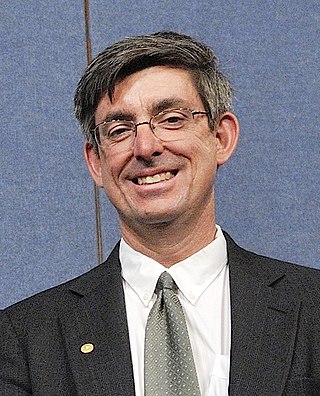Top Qs
Timeline
Chat
Perspective
John L. Sarrao
American physicist From Wikipedia, the free encyclopedia
Remove ads
John Louis Sarrao (born February 1, 1967)[citation needed] is an American physicist. He was the deputy director for science, technology, and engineering at Los Alamos National Laboratory.[1][2] As of 2 October 2023, he became the sixth director of SLAC National Accelerator Laboratory[3]
Remove ads
Education
In 1993, Sarrao received his PhD in physics from the University of California Los Angeles following a M.S. in physics from UCLA in 1991 and a B.S. in physics from Stanford University in 1989.[4][5]
He is a Fellow of the American Association for the Advancement of Science;[6] the American Physical Society;[7][circular reference][8] and the Los Alamos National Laboratory.[9]
Career
He is the principal architect of LANL’s Dynamic Mesoscale Material Science Capability (DMMSC).[10][11]
He is a board member of the Technology Research Collaborative (TRC).[12]
Sarrao's research includes quantum computing.[13]
On June 7, 2018, Sarrao presented Congressional Testimony for the House Science, Space & Technology Committee Subcommittee on Energy on topics including electric grid research and big data.[14]
Remove ads
Honors and awards
In 2013, he was awarded the United States Department of Energy’s Ernest Orlando Lawrence Award for his research in Condensed Matter and Materials Science: “For the discovery and study of new materials, especially those based on Plutonium, advancing understanding of unconventional magnetic and superconducting states in strongly correlated f-electron condensed matter systems.”[15]
He was honored for his discovery and study of new materials, especially those based on Plutonium, that advance understanding of novel magnetic and superconducting states in strongly correlated f-electron condensed matter systems.[16][17] The complexity of strongly correlated materials, resulting from coupling among charge, spin, and lattice degrees-of-freedom, allows the emergence of new states and new phenomena, helping promote the development of useful and novel functional materials.[18]
References
Wikiwand - on
Seamless Wikipedia browsing. On steroids.
Remove ads

